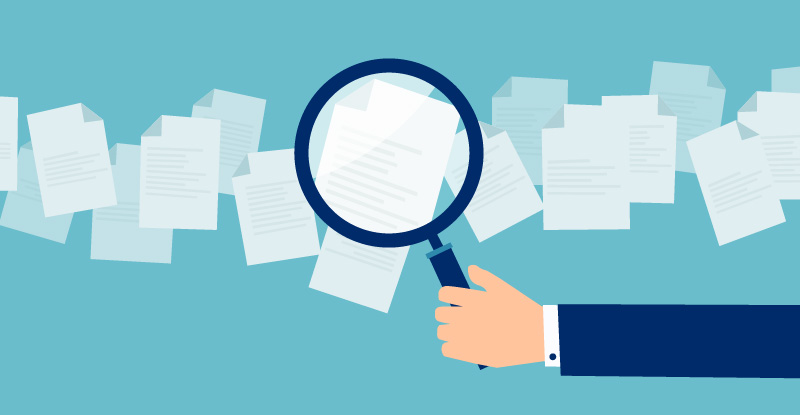
Reaching your financial goals takes work, but thankfully, government tax-sheltered savings accounts can help you excel toward your goals. Most notably, these types of savings vehicles can defer or help you avoid being taxed on investment earnings and compound interest, and reduce your taxable income. Two key players are Registered Retirement Savings Plans (RRSPs) and Tax-Free Savings Accounts (TFSAs), which are designed to help people achieve their financial objectives. These objectives may include buying a home, saving for a wedding, and retiring with peace of mind.
The tax benefits from RRSPs and TFSAs can be significant over time and therefore greatly outweigh the benefits of simply putting money away in a high-interest savings account. Moreover, if you’re someone who prefers to invest in financial vehicles such as mutual funds, guaranteed investment certificates (GICs), exchange-traded funds (ETFs), stocks, and bonds, RRSPs and TFSAs are excellent options because they allow for these types of investments, meaning your savings can grow beyond simply earning interest.
In the Canadian tax system, there are two types of tax savings: absolute and deferred. With absolute, taxes are saved or avoided entirely. With deferred, taxes are not immediately payable in the current year, but pushed out to a future year. TFSAs help you take advantage of absolute tax savings and RRSPs help you benefit from deferred savings. This article will explain how this works.
RRSPs
RRSPs, along with TFSAs, can be opened at financial institutions such as banks or wealth management firms. As with other types of savings accounts, you’ll receive interest from the funds in your account over time. However, if you choose an RRSP that allows you to invest your money in options such as mutual funds and GICs, you’ll likely also receive earnings on your principle – the initial funds you put into your RRSP. Over time, interest and earnings can grow considerably and as long as your funds stay in your account, you won’t be taxed.
Since RRSPs are tax-deferral vehicles, you will be taxed once you start withdrawing from your RRSPs. However, as RRSPs are intended for retirement savings, your tax bill at that point should be less than during your working years, since your income will presumably be lower.
Another benefit of RRSPs is that the contributions you make are deductible from your taxable income during the year you make them. Therefore, after you file your personal income taxes, you may receive a tax refund, as you’ll likely have been taxed on your full income throughout the year. Many employers also offer RRSP-matching benefits to employees. In these cases, funds may be automatically withdrawn from your pay cheque pre-tax – before you’ve even paid income tax on those earnings – and deposited into an established RRSP account on your behalf. With an employer-matching RRSP, your employer matches that same amount (up to a certain percentage of your salary), which allows your RRSP funds to grow even more quickly.
There are two instances where individuals can withdraw RRSP funds without being taxed, so long as the funds are returned within a given time. One instance is the Home Buyers’ Plan, where an individual can withdraw up to $35,000 from their RRSPs to make a down payment on a home. The plan holder will have 15 years to contribute their funds back into their RRSP account or else be taxed on the total of the amount withdrawn. If this happens the holder will be taxed at their current rate of tax, and not the tax rate that was in effect when the contributions took place, which over time may now be higher.
The other exception is the Lifelong Learning Plan, where an individual can withdraw up to $10,000 each year from their RRSPs to finance full-time training or education. The lifetime maximum that can be withdrawn is $20,000, and funds must be recontributed within ten years, or similar to the Home Buyers’ Plan, the amount will be taxable if not repaid.
In both of these options, the holder can contribute up to the maximum amount of repurchase required to offset their RRSP repayment, and the amounts of repayment can vary over the allowable repayment period.
The maximum amount you can contribute to an RRSP for the 2023 tax year is 18% of your earned income reported on your 2022 tax return up to a maximum of $30,780 – subject to certain adjustments. Any contribution room you do not use can be carried over indefinitely. You can refer to your Notice of Assessment from the previous year or log into My Account for Individuals on the Government of Canada site, to check your current RRSP contribution limit.
In short, RRSPs are ideal for long-term investment. RRSP accounts must be closed the year the plan holder turns 71-years-old. At that point, the RRSP funds can be converted into a Registered Retirement Income Fund (RRIF), where regular withdrawals can be made with ease to provide retirement income.
The deadline to contribute to your RRSP in a calendar year is always the end of February. The government allows for a two-month grace period, as RRSPs can make a sizable difference in an individual’s personal income tax filing, given the benefits of taxable income reduction. The deadline to purchase RRSPs for the 2023 calendar year is February 29, 2024.
TFSAs
Similar to RRSPs, TFSAs can include investment portfolios, and your funds will grow over time from interest and investment earnings. However, in contrast to RRSPs, you will not be taxed on withdrawals, because TFSAs are considered absolute tax savings vehicles. While some people may wish to wait until retirement to access their TFSAs, others opt to make withdrawals for shorter-term goals, such as paying for engagement rings, weddings, and trips. TFSAs can also be tapped into when faced with financial emergencies.
While TFSAs cannot be used to reduce your taxable income, they offer different carryforward options. The previous TFSA contribution limit each year was $6,000 and in 2023, this amount was increased to $6,500. For the 2024 tax year, the amount is now $7,000. If you do not max out your contribution in a given year, whatever is left can be carried forward into future years.
Further, when you make a withdrawal from your TFSA, you do not have to recontribute that amount within a certain time limit. In fact, you won’t be able to recontribute that amount until the following calendar year. For example, if you withdrew $2,000 from your TFSA in 2023, you would be allowed to contribute the standard $7,000 as well as the $2,000 you withdrew in 2023, for a total of $9,000 in 2024. It is important to note, any amounts withdrawn in a calendar year must not be repaid in the same year without scrutiny to ensure there is no risk of over contributing. Over contributing to a TFSA in a single period will result in a tax liability in the year it occurs.
The restrictions noted above only come into play if you’ve already maxed out your current lifetime TFSA contribution. Since the federal government introduced the TFSA in 2009, any Canadian who was 18 years old or older at that time can contribute a maximum of $95,000 now if they have never contributed to a TFSA. For younger individuals, their maximum contribution limits are pro-rated respectively. As with RRSPs, you can check your TFSA contribution limit in your last Notice of Assessment or on the My Account for Individuals page.
Other tax-sheltered options
Two other government tax-sheltered savings opportunities that you should keep on your radar if they apply to you, are the First Home Savings Accounts (FHSA) and the Registered Education Savings Plan (RESP).
Launched in April 2023, the FHSA allows prospective first-time home buyers to contribute up to $8,000 a year to save for a down payment. The lifetime maximum contribution to a FHSA is $40,000 and withdrawals will never be taxed. Similar to the TFSA, carryforward amounts are allowed. Therefore, if an individual opens a FHSA in 2024, they can contribute both the $8,000 maximum for the year, as well as the $8,000 they did not contribute in 2023, for a total of $16,000.
The RESP is a way for parents to save for their children’s post-secondary education. While contributions are not tax deductible, interest and earnings are not taxed until the funds are withdrawn, similar to RRSPs. The difference here is that while a parent is usually the fund contributor when withdrawals are eventually made, they are added to the income of the child who is using the money for their education. Since most students have low income, the amount the student is taxed will be minimal.
Another benefit of the RESP is that the Canadian Education Savings Grant (CESG) can contribute up to $7,200 to each RESP. The earlier an RESP is started in a beneficiary’s life, the more likely they can receive the full CESG amount.
RRSP and personal income tax filing deadlines
The deadline to purchase RRSPs to be applied to your 2023 income tax is February 29, 2024, and the deadline to file your 2023 income tax is April 30, 2024. CPABC offers a CPA firm directory if you would like tax advice or assistance. Also, refer to the Government of Canada’s personal income tax resources to stay up-to-date with tax-related changes and more information.
Tax rules can be complex. This article is not intended as tax advice, and you should not make tax decisions based solely on the information presented. You should seek the advice of a chartered professional accountant before implementing a tax plan or taking a tax filing position.
Visit the CPABC Financial Literacy page for more helpful FinLit tips and resources.
Tami Zaranski, CPA, CMA, is the director, finance and administration at the Garth Homer Society and holds a Masters in Global Business & Innovation Leadership. She has been an active member of the CPABC Financial Literacy volunteer program since 2016.



